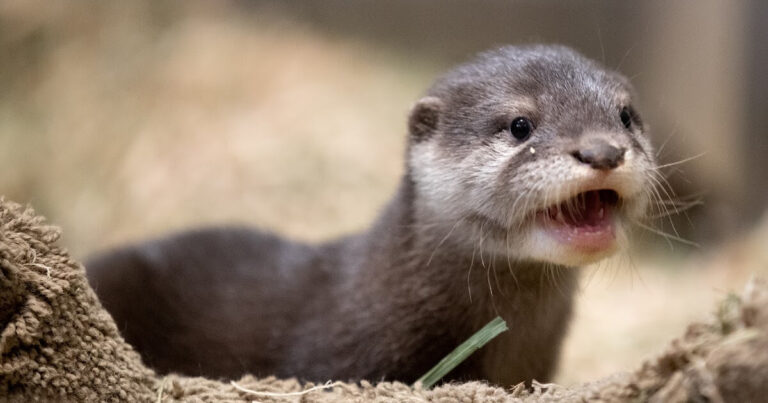Yak (Bos grunniens): A Comprehensive Guide
The Yak, scientifically known as Bos grunniens, is a majestic animal native to the high-altitude regions of the Himalayas and the Tibetan Plateau. Yaks are incredibly important to the people of these regions, providing food, transport, and materials for shelter. Let’s dive into the fascinating world of yaks, exploring their physical characteristics, habitat, behavior, and more.
Contents
Scientific Classification
- Kingdom: Animalia
- Phylum: Chordata
- Class: Mammalia
- Order: Artiodactyla
- Family: Bovidae
- Genus: Bos
- Species: Bos grunniens (domesticated), Bos mutus (wild yak)
The domesticated yak (Bos grunniens) differs slightly from the wild yak (Bos mutus), but they share many characteristics and are vital to high-altitude ecosystems.
Physical Characteristics

Yaks are well-adapted to survive in cold, mountainous regions. Their distinctive features include:
- Size: Adult males can weigh between 1,000 and 1,200 pounds, while females are generally smaller, weighing around 600 pounds.
- Fur: They have long, thick fur that protects them from the cold, particularly a dense undercoat and shaggy outer coat.
- Color: Most yaks are dark brown or black, but domesticated varieties can also be brown or white.
- Horns: Both males and females possess horns. Males’ horns are typically longer, reaching up to 32 inches, while females’ horns are shorter.
- Hooves: Their hooves are large and spread out, which helps them traverse rocky and snowy terrain.
Habitat
Yaks are found in the high-altitude regions of the Himalayas, Tibetan Plateau, Mongolia, and parts of Siberia. Wild yaks inhabit over 10,000 feet above sea level, thriving in alpine meadows and cold, barren landscapes where few other animals can survive.
Climate Adaptation
Yaks are highly adapted to cold climates. Their thick coat and strong lungs enable them to live in harsh conditions with low oxygen levels. They can tolerate temperatures as low as -40°C (-40°F), and their unique physiology helps them conserve energy in extreme environments.
Behavior and Social Structure
Yaks are social animals, generally living in herds. Their behavior varies between domesticated and wild populations:
- Herd Size: Wild yaks live in herds ranging from 10 to 100 individuals, while humans often keep domesticated yaks in smaller groups.
- Temperament: Domesticated yaks are docile and have been bred for work purposes. Wild yaks, however, are more aggressive, especially during the mating season.
Seasonal Migration
During the summer, yaks move to higher elevations to graze on alpine grasses. In winter, they migrate to lower elevations to escape harsh snowstorms.
Diet
Yaks are herbivores, primarily grazing on grasses, sedges, and herbs that grow in high-altitude regions. In winter, they use their hooves to dig through snow for plants. They are well-adapted to consuming coarse and nutrient-poor vegetation.
- Water: Yaks obtain most of their water from snow and ice, as liquid water is often scarce in their natural habitat.
- Ruminant Digestion: Yaks, like other bovines, are ruminants, meaning they have a specialized digestive system that allows them to break down tough plant material through fermentation in the rumen.
Reproduction and Life Cycle
Yaks have a slow reproductive cycle due to the harsh environments they inhabit.
- Breeding Season: The mating season occurs in September, with males competing for females.
- Gestation: The gestation period lasts about 9 months, and females typically give birth to one calf in the spring.
- Calves: Newborn calves weigh around 30 pounds and can walk shortly after birth. They are nursed for about a year before becoming independent.
- Lifespan: Yaks can live up to 20 years in the wild, with domesticated yaks often living longer due to human care.
Predators and Threats
Wild yaks face several predators, including:
- Snow leopards: One of their primary predators, especially for calves.
- Wolves: Wild yaks can prey on packs of wolves, particularly the sick, young, or old individuals.
- Human Activity: The biggest threat to both wild and domesticated yaks is human activity, including hunting and habitat destruction.
Conservation Status
The wild yak (Bos mutus) is listed as Vulnerable by the IUCN due to declining population numbers. Human encroachment, poaching, and competition with livestock for grazing areas have severely impacted wild yak populations.
- Conservation Efforts: Several conservation programs in China, Mongolia, and India focus on preserving wild yak populations by creating protected areas and promoting sustainable livestock management.
Interesting Facts About Yaks
- Yak milk: Yaks produce rich, fatty milk often used to make butter, cheese, and yogurt, which are staple foods for nomadic people in the Himalayas.
- Yak racing: In some regions of Tibet and Mongolia, yak racing is popular during festivals.
- Multi-functional: Yaks are used for transportation, plowing fields, and as a source of wool, meat, and milk.
Evolutionary History
Yaks are closely related to domestic cattle; both species likely share a common ancestor. Yaks are believed to have diverged from cattle around 1 to 5 million years ago, adapting to the cold climates of the Himalayas over time.
Adaptations to Cold
The thick coat and unique blood composition of yaks have helped them survive in extreme cold conditions for millennia. They have larger lungs and hearts than other bovines, allowing them to function effectively in low-oxygen environments.
Relationship with Humans
Yaks have played an integral role in the lives of people in the Himalayas and Tibetan Plateau for thousands of years. Domesticated yaks provide transportation, food, and materials for clothing and shelter.
- Nomadic Communities: For many nomadic communities, yaks are essential to their livelihood. Yaks carry heavy loads across mountainous terrain and are used to plow fields.
- Yak Festivals: In Tibet and Mongolia, yak-related festivals are celebrated with yak races, rodeos, and other events showcasing the importance of these animals in daily life.
Conclusion
The yak, whether wild or domesticated, is a remarkable animal uniquely adapted to life in some of the harshest environments on Earth. Its significance to the people of the Himalayas and Tibetan Plateau cannot be overstated, serving as a source of food, transport, and clothing. However, the future of the wild yak remains uncertain, as human activities threaten its habitat. Conservation efforts are critical to preserving this iconic species for future generations to admire.
- Are Rottweilers Good With Kids? Reasons & Training Tips - 17 September 2025
- How Long Are Dogs Pregnant: Complete Guide - 16 September 2025
- German Shepherd Doberman Mix: Info, Pictures, Care & More - 11 September 2025







